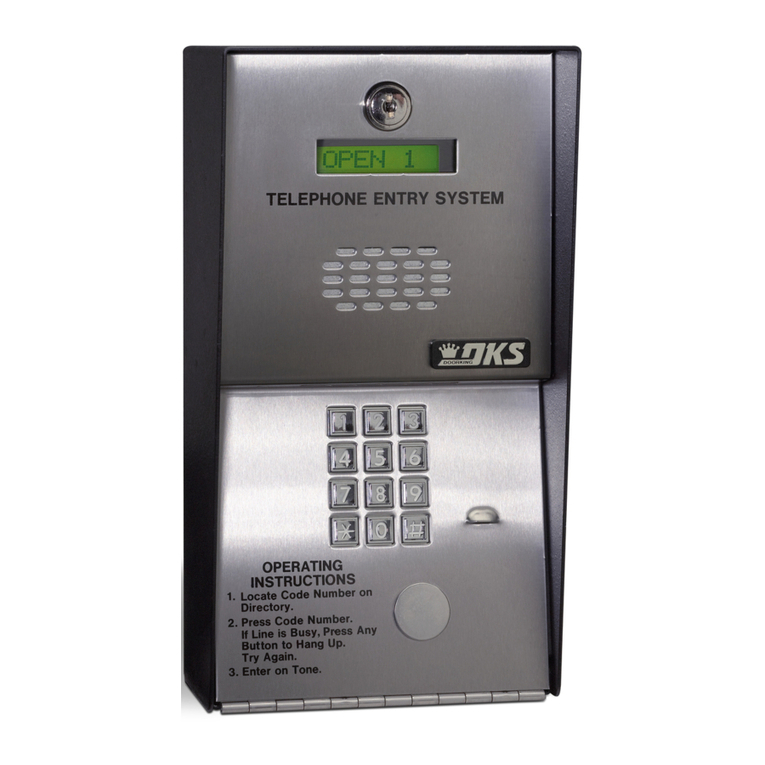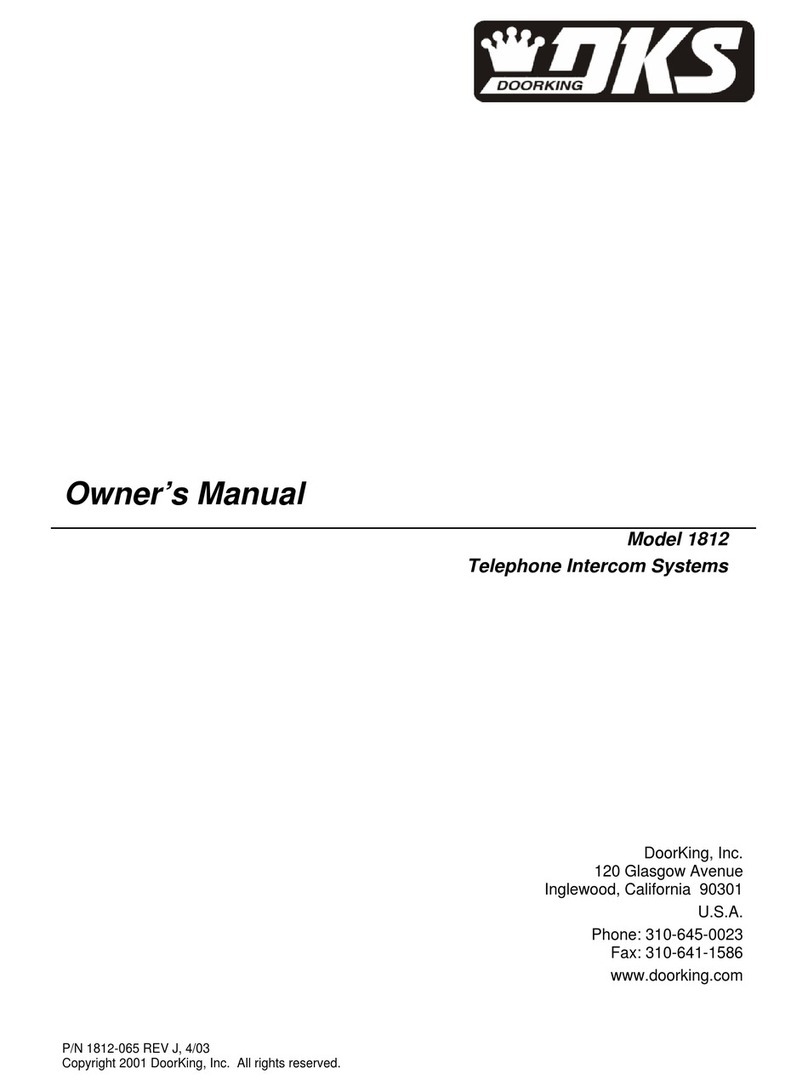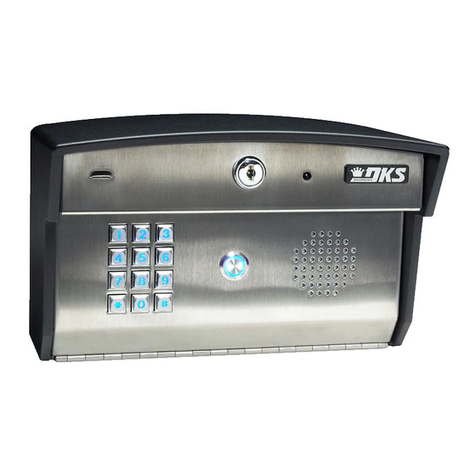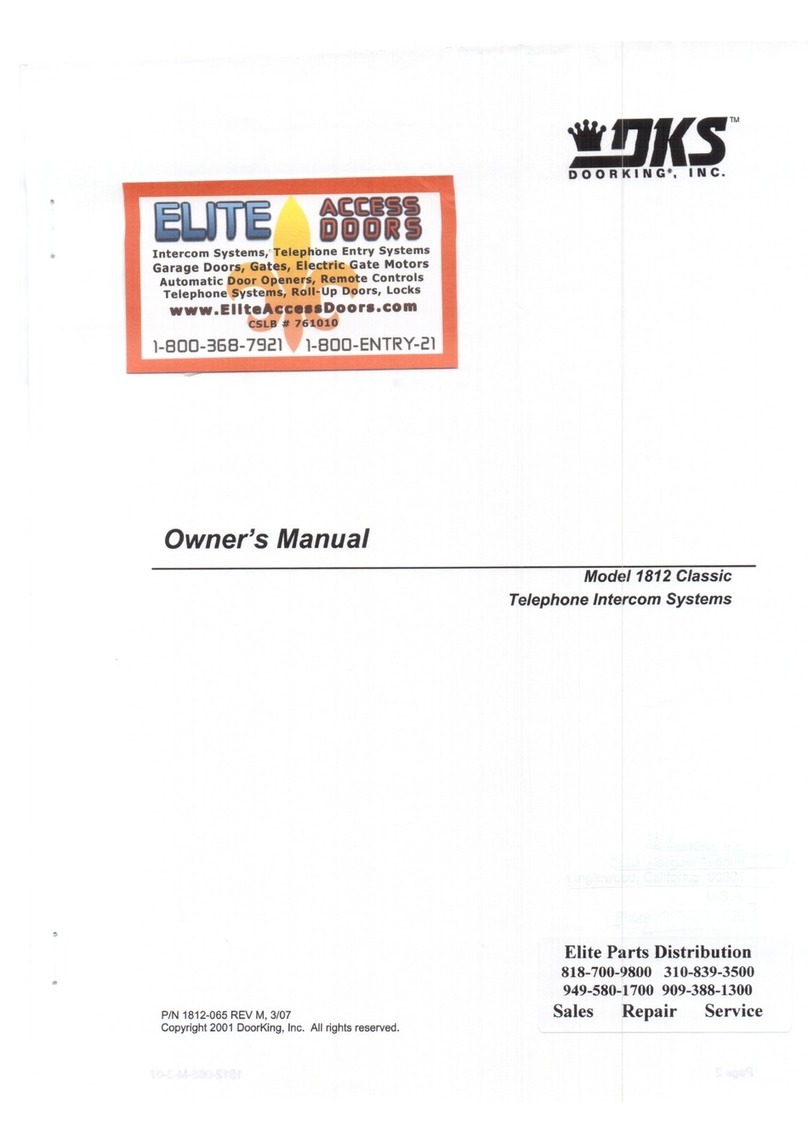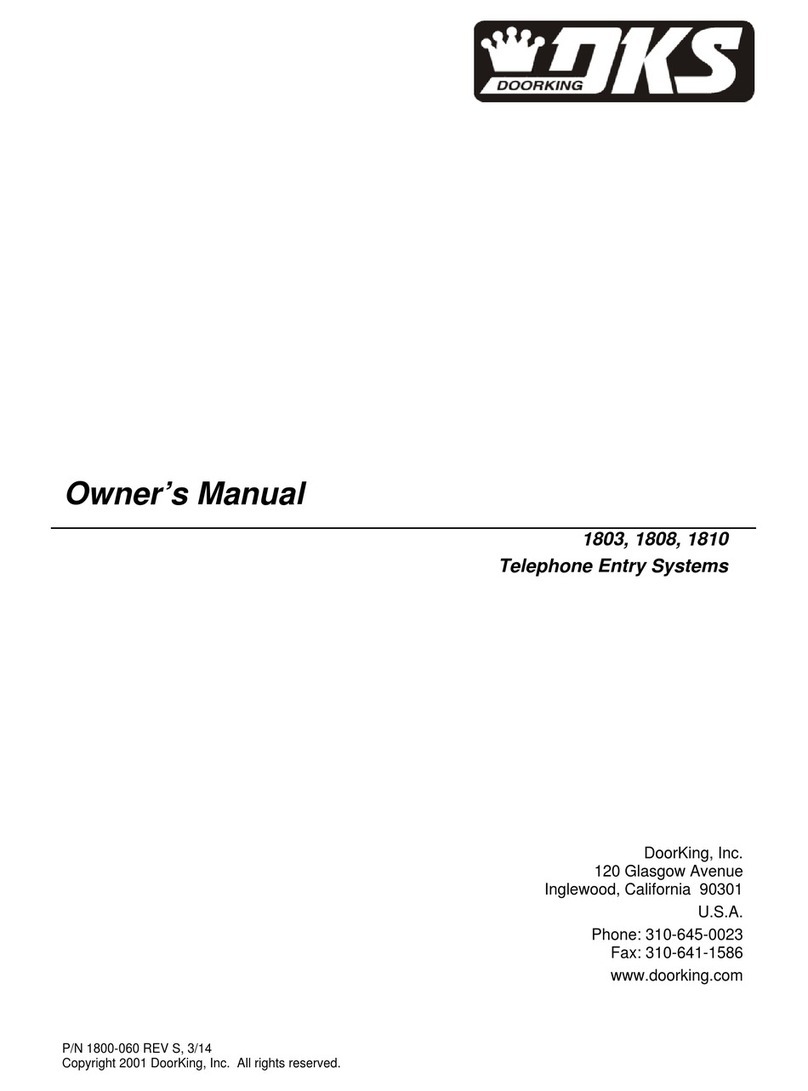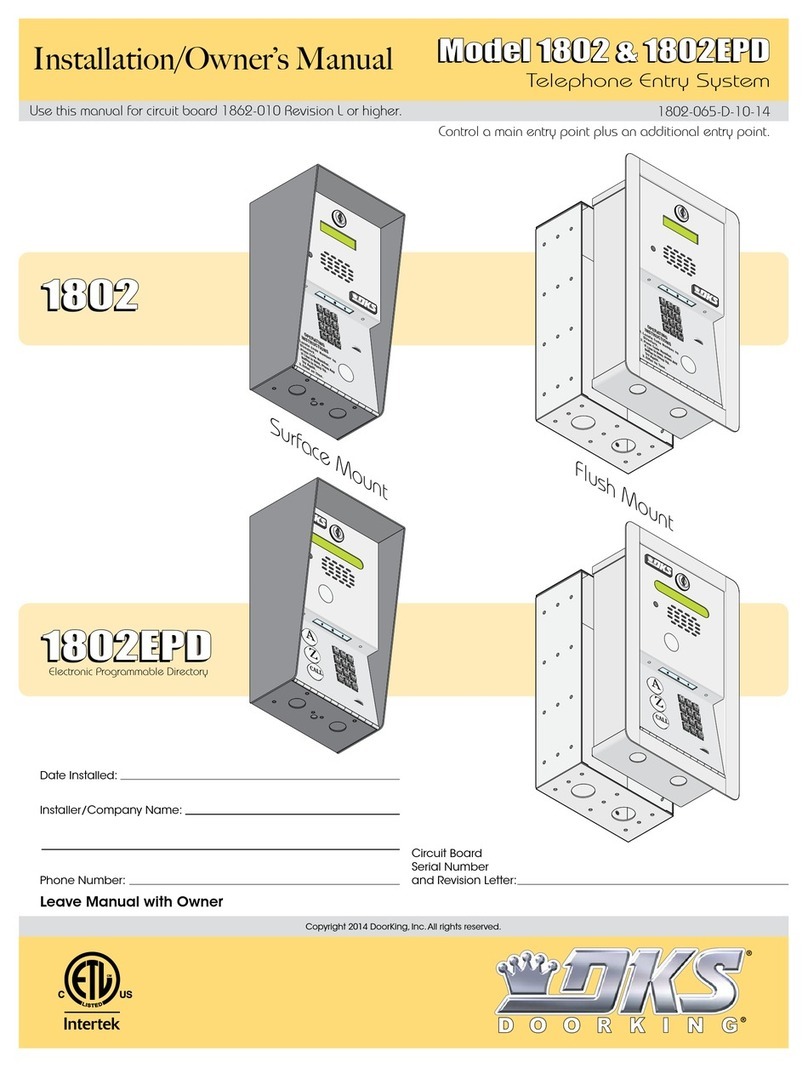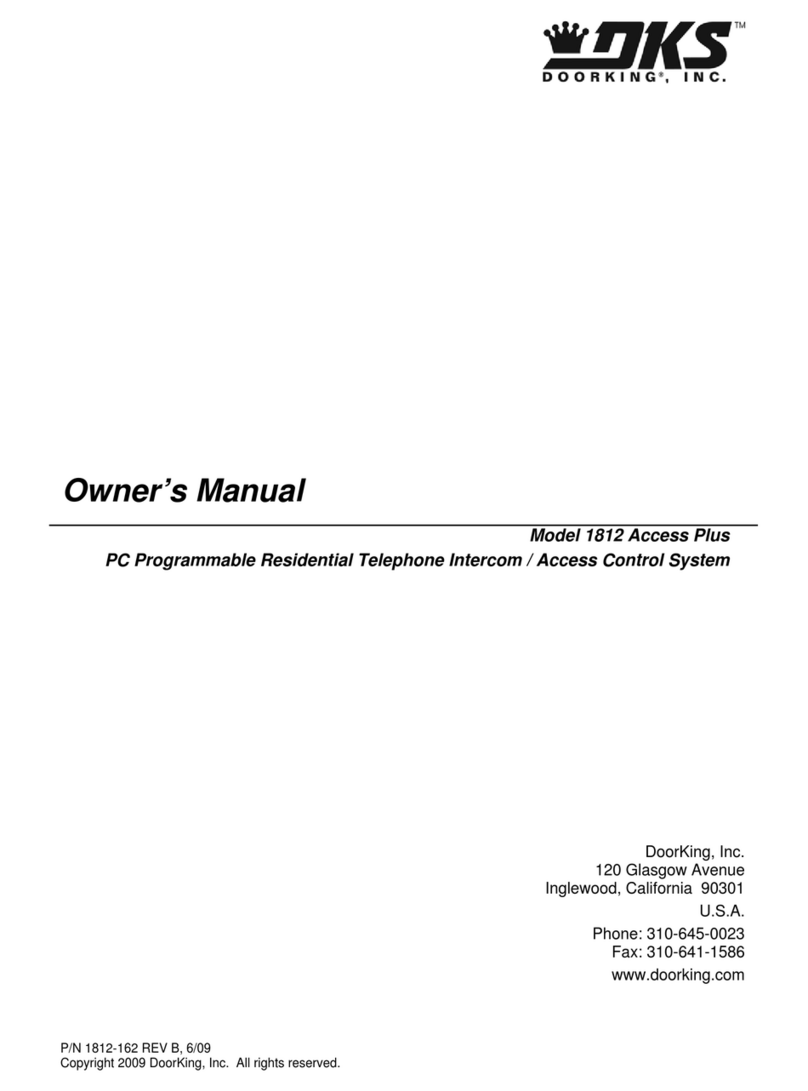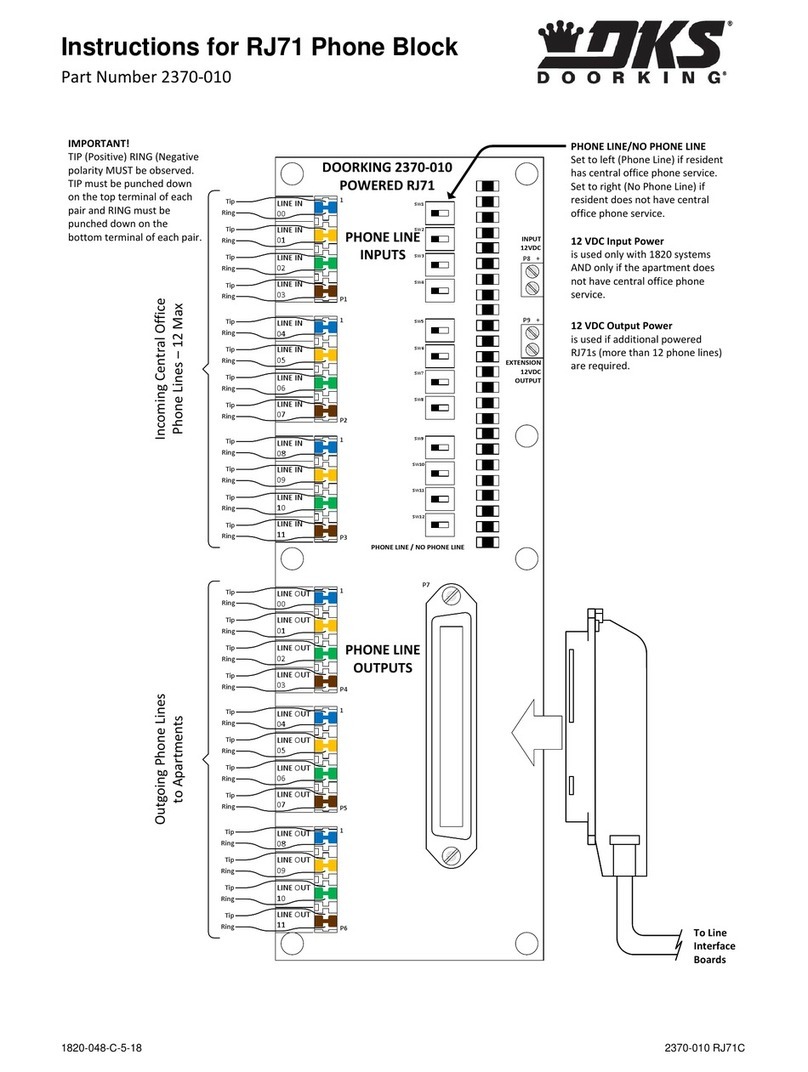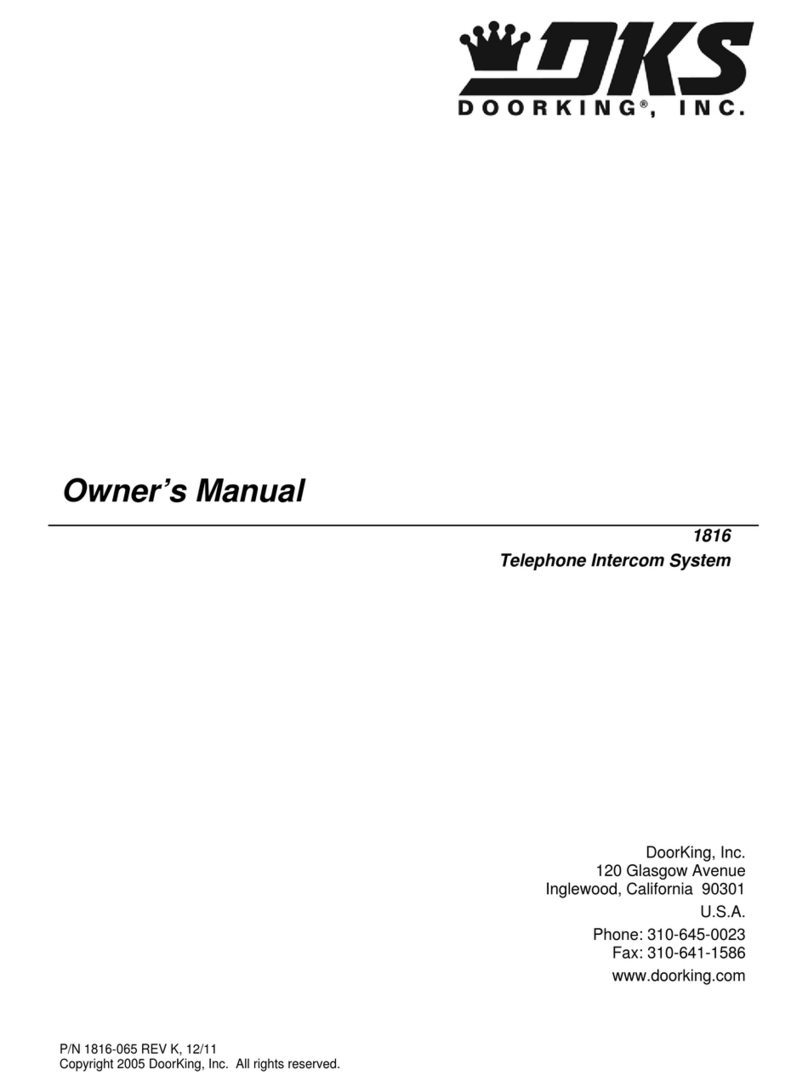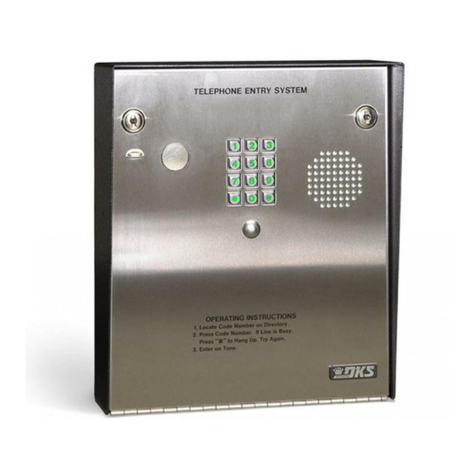
1834-065-B-10-14
6
SECTION 1 - INSTALLATION
Prior to installing the telephone entry system, we suggest that you become familiar with the instructions, illustrations, and
wiring guidelines in this manual. This will help insure that you installation is performed in an efficient and professional manner.
Order your telephone line to be installed at least two weeks prior to the planned telephone entry system installation date.
This will assure that a phone line is available when the unit is installed. The telephone company will require the following
information from you:
There are 3 different styles of the 1834 telephone entry system (Surface, flush and wall mounts), and many different ways to
mount them (On a wall, in a wall, attached to a architectural style post, kiosk, etc). Specific models will vary a little from the
general installation described in this manual and minor modifications will need to be made depending on which one of the entry
system models has been chosen and where it will be mounted. They will ALL need a telephone line, power and communication
wires run to them in conduit or inside a architectural style post. Feed all of the wires through the back or bottom of the entry
system using the existing knock-outs provided in the enclosures. DO NOT make any new holes in the enclosure to feed wires
through. Keep ALL the entry system’s wires away from any existing high voltage power wires a minimum of 6” to help prevent
any noise and hum pickup in the system’s phone line. The system MUST also be properly grounded to function correctly.
WARNING If this telephone entry system is used to control a vehicular gate with an automatic gate operator, the telephone
entry system must be mounted a minimum of ten (10) feet away from the gate and gate operator, or in such a way that the
user cannot come into contact with the gate or gate operator when using this entry system.
The telephone entry system contains a number of static sensitive components that can be damaged or destroyed by static
discharges during installation. Discharge any static prior to removing the circuit board by touching a proper ground device.
GREAT care must be taken after removing the components from the enclosure to protect them throughout the installation.
Carelessness on your part is NOT covered under warranty.
Make sure ALL dirt, metal or wood debris is removed from inside the enclosure after mounting it. A through cleaning of the
enclosure is needed before re-installing the components back into the system and wiring it. Any debris left inside could damage
the control board and cause the telephone entry system to malfunction during operation.
Caller ID: You may want to order caller ID blocking from the telephone company for the entry system phone line. Without
caller ID blocking, residents with the proper phone equipment WILL BE ABLE to identify the telephone number that the
telephone entry system is installed on. This may or MAY NOT be desirable.
Call Waiting: Residents may order call waiting from their local telephone company AFTER the system has been installed.
They can avoid missing calls coming from the telephone entry system while they are using their phone (No busy signal).
1.1 General Installation
Type: Touch Tone, Loop Start
Ringer Equivalence: 0.0 A
Jack Type: RJ11C
FCC Registration (US): DUF6VT-12874-OT-T
DOC (Canada): 1736 4528 A
Electrical Listing: Complies with UL 294 - ETL Listed
TELEPHONEENTRYSYSTEM
HOLDTOSCAN
OPERATINGINSTRUCTIONS
Use“AtoZ”ButtonstoLocate
NameandCodeNumberonDisplay.
NamesareInAlphabeticalOrder.
T
oCall,EnterCodeNumberon
KeypadorPress“Call”Button.If
LineisBusy,Press“#”or“Call”to
HangUp.TryAgain.
E
nteronOpenDisplayandTone.
1.
2.
3.
TELEPHONEENTRYSYSTEM
HOLDTOSCAN
OPERATINGINSTRUCTIONS
Use“AtoZ”ButtonstoLocate
NameandCodeNumberonDisplay.
NamesareInAlphabeticalOrder.
ToCall,EnterCodeNumberon
KeypadorPress“Call”Button.If
LineisBusy,Press“#”or“Call”to
HangUp.TryAgain.
EnteronOpenDisplayandTone.
1.
2.
3.
TELEPHONEENTRYSYSTEM
HOLDTOSCAN
OPERATINGINSTRUCTIONS
Use“AtoZ”ButtonstoLocate
NameandCodeNumberonDisplay.
NamesareInAlphabeticalOrder.
ToCall,EnterCodeNumberon
KeypadorPress“Call”Button.If
LineisBusy,Press“#”or“Call”to
HangUp.TryAgain.
EnteronOpenDisplayandTone.
1.
2.
3.
TELEPHONEENTRYSYSTEM
HOLDTOSCAN
OPERATINGINSTRUCTIONS
Use“Ato Z”Buttonsto Locate
NameandCodeNumberonDisplay.
NamesareInAlphabeticalOrder.
T
oCall,EnterCodeNumberon
KeypadorPress“Call” Button.If
LineisBusy,Press“#”or“Call”to
HangUp.TryAgain.
E
nteronOpenDisplayandTone.
1.
2.
3.
DoorKing
Mounting Post
Surface and Wall
Mounts Only
Outside Wall Inside WallLighted-Covered
Kiosk
DoorKing Self-Standing
Lighted Kiosk
Flush Mount Only






